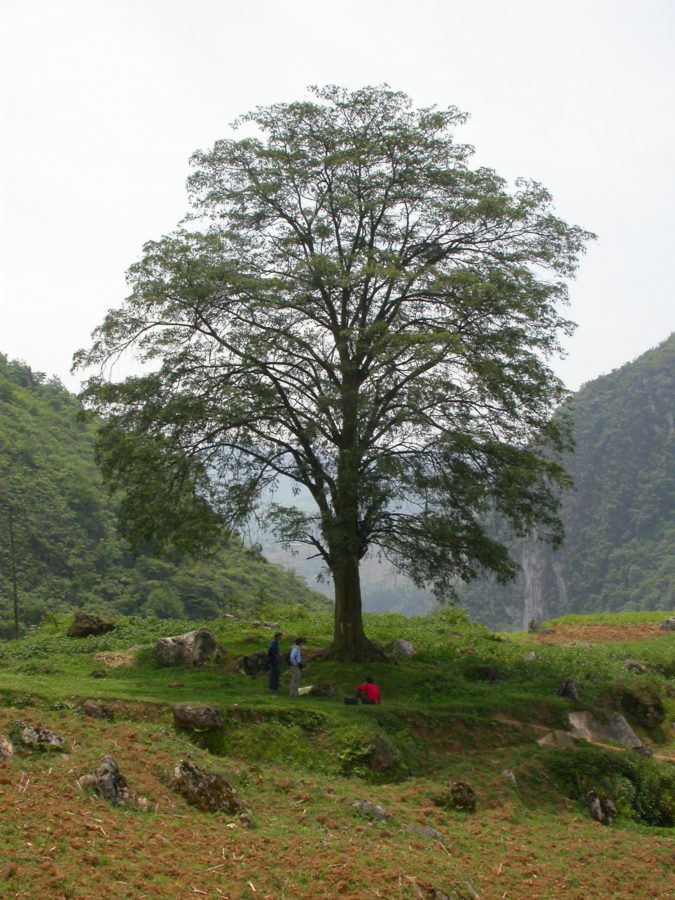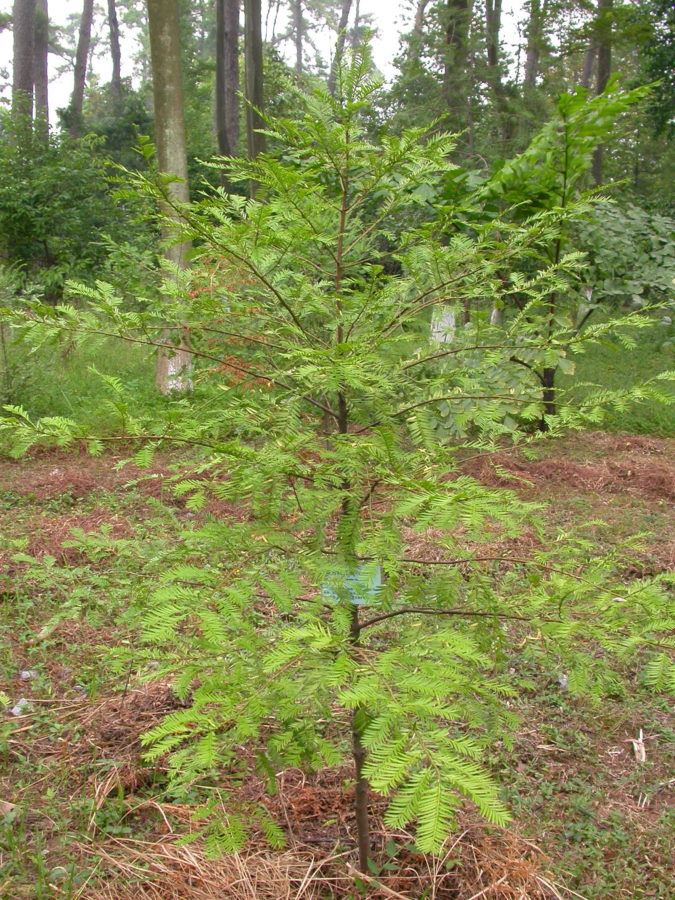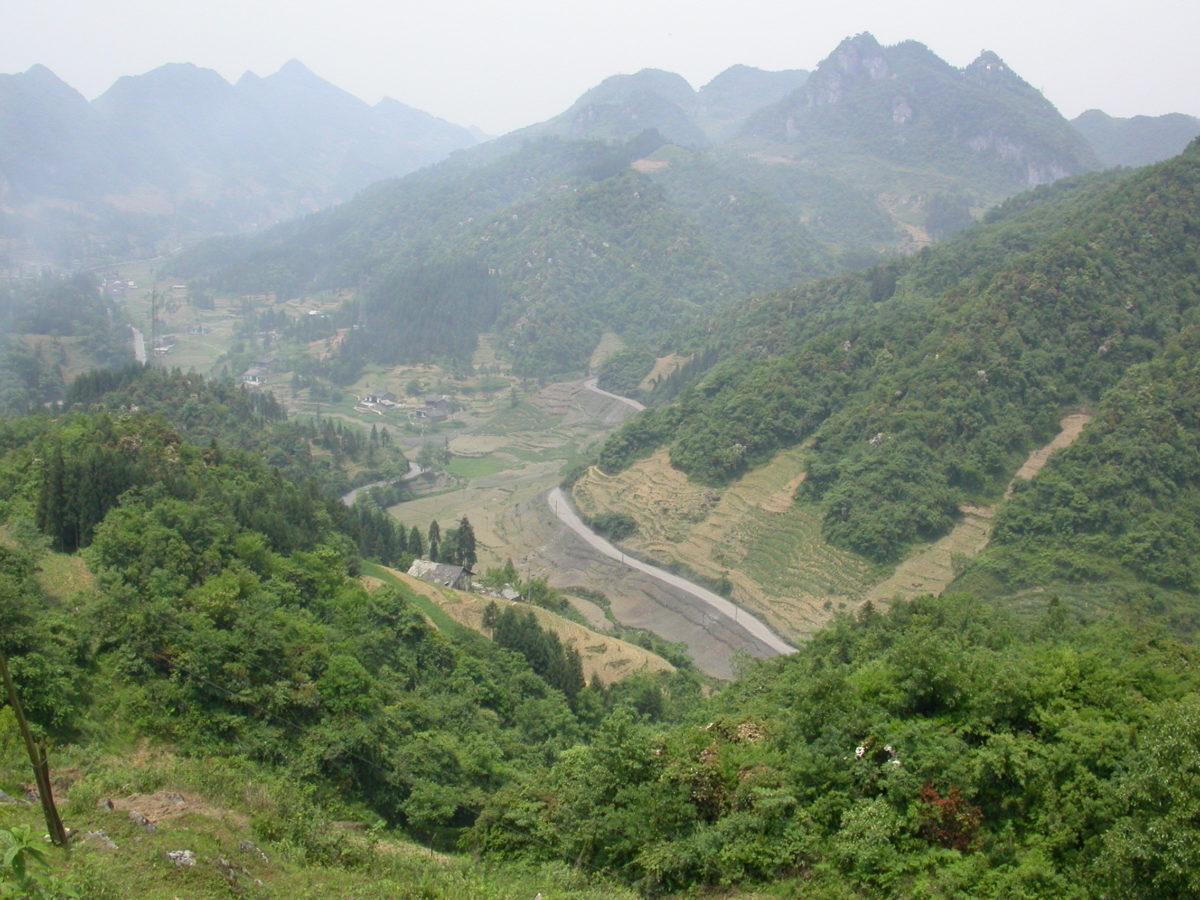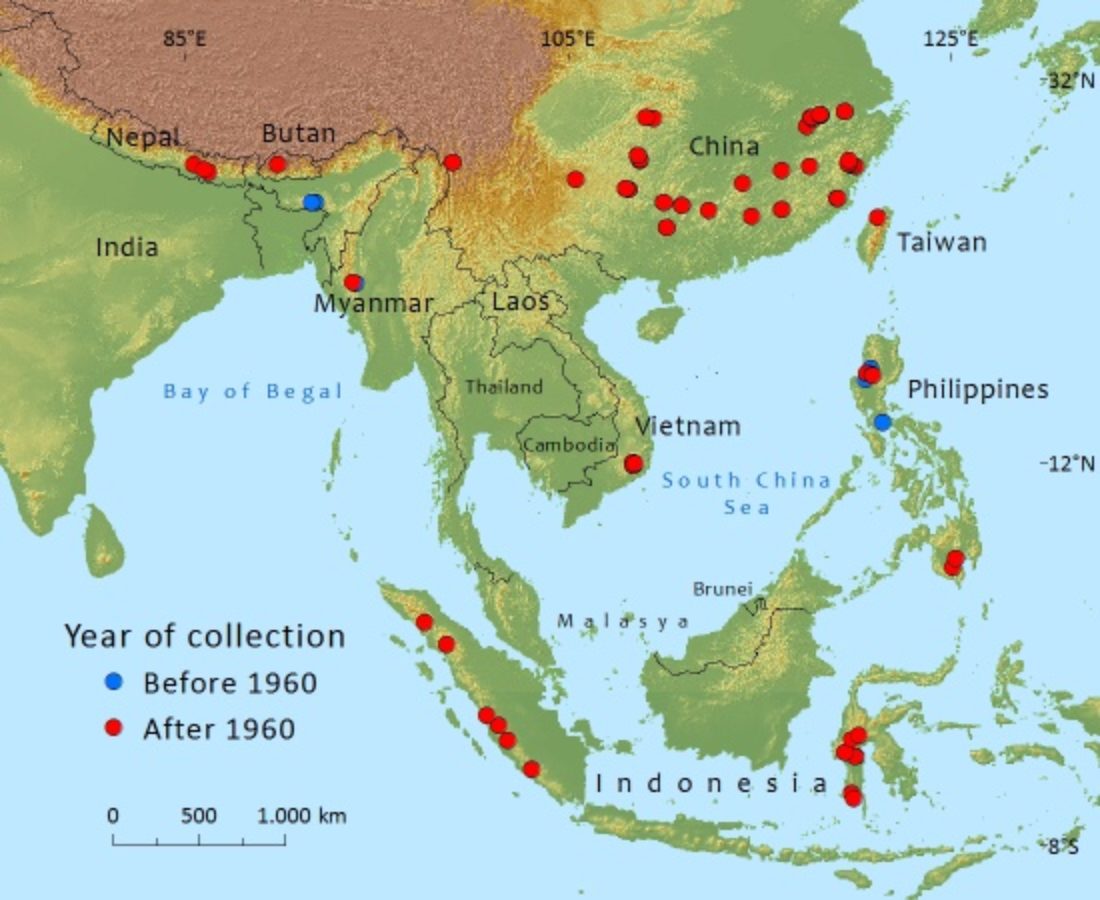Taxaceae
Taxus mairei
Scattered throughout southern China, Taiwan and parts of the eastern Himalayas as well as southern Vietnam. Subpopulations are severely fragmented and threatened due to overexploitation for medicinal use, deforestation for agricultural purposes and urbanisation.
Description
Taxonomic notes
Traditionally this species has beeen regarded as being endemic to mainland southeastern China with an isolated occurrence near Tengchong in Yunnan, and on the island of Taiwan. This distribution forms the basis for the current IUCN Redlist assessment. However, recent studies of Taxus populations across the Himalayas and southeast Asia have confirmed that this species also occurs in Nepal, northeast India, Myanmar and Vietnam (Poudel et al. 2012). Taxus in these areas are usually identified as T. wallichiana. The research has also raised questions about the identity of the Taiwanese subpopulations (Jie Liu et al. 2011, Zhang et al. 2009).
Human Uses
Taxus mairei has been heavily exploited throughout its range for Taxol production. It is also used in Amchi, Ayurveda, Han Chinese and Unani traditional medicinal systems to treat ailments such as gastro- intestinal disorders, respiratory problems and skeletal system disorders. Locally the arils may be eaten, the wood used for construction, especially tool handles and the foliage for fodder or animal bedding (Poudel et al. 2013).
References and further reading
- Cheng, W. & L. Fu (ed.). (1978). Flora Reipublicae Popularis Sinicae 65(1). Gymnospermae. pp. 542. Science Press, Beijing.
- Farjon, A. (2010). A Handbook of the World's Conifers. Koninklijke Brill, Leiden.
- Gao, L.M., M. Moeller, X.-M. Zhang, M. Hollingsworth, J. Liu, R.R. Mill, M. Gibby & D.-Z. Li. (2007). High variation and strong phylogeographic pattern among cpDNA haplotypes in Taxus wallichiana (Taxaceae) in China and North Vietnam. Journal of Molecular Ecology (16): 4684-4698.
- Liu, J., M. Moeller, L.M. Gao, D.Q. Zhang & D.Z. Li 2011. DNA barcoding for the discrimination of Eurasian yews (Taxus L., Taxaceae) and the discovery of cryptic species. Molecualr Ecology Resources 11:89-100.
- Moller, M.M., Gao, L.M., Mill, R.R., Li, D.Z., Hollingsworth, M.L. & Gibby, M. (2007). Morphometric analysis of the Taxus wallichiana-complex based on herbarium material. Botanical Journal of the Linnaean Society 155: 307-355.
- Poudel RC, Gao L-M, Moeller M, Baral SR, Uprety Y, Jie Liu & Li, DZ. (2013). Yews (Taxus) along the HinduKush-Himalayan region: Exploring the ethnopharmacological relevance among communities of Mongol and Caucasian origins Journal of Ethnopharmacology 147:190–203
- Poudel RC, Moeller M, Gao L-M, Ahrends A, Baral SR, Jie Liu, Thomas P & Li, DZ. (2012). Using Morphological, Molecular and Climatic Data to Delimitate Yews along the Hindu Kush-Himalaya and Adjacent Regions. PLoS ONE 7(10): e46873. doi:10.1371/journal.pone.0046873
- Wu, Z. & Raven, P.H. (eds). (1999). Flora of China: Vol.4. Cycadaceae through Fagaceae. Science Press (Beijing) & Missouri Botanical Garden (St. Louis).
- Zhang, X.M., Gao, L.M., Moller, M. & Li, D.Z. (2009). Molecular evidence for fragmentation among populations of Taxus wallichiana var. mairei, a highly endangered conifer in China. Canadian Journal of Forest Research 39(755-764).











